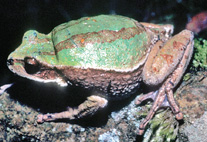Abstract
Freshwater hairworms infect terrestrial arthropods as larvae but are free-living in aquatic habitats as adults. Estimates suggest that only 18% of hairworm species have been described globally and biodiversity studies on this group have been hindered by unreliable ways of collecting adult free living worms over large geographical areas. However, recent work indicates that non-adult cyst stages of hairworms may be the most commonly encountered stages of gordiids in the environment, and can be used for discovering the hidden diversity of this group. Unfortunately, little information is available on the morphological characteristics of non-adult stages of hairworms. To address this problem, we describe and compare morphological characteristics of non-adult stages for nine species of African and North American gordiids from four genera (Chordodes, Gordius, Paragordius, and Neochordodes). Observations were made on the oviposition behavior of adult worms and morphological characteristics were recorded for egg strings, larvae and cysts using light and differential interference contrast microscopy and/or scanning electron microscopy. Our study indicates that three distinct types of oviposition behaviors and three distinct morphological types of egg string, larva, and cysts were present among the four genera of gordiids. Although species identification based on cyst characteristics was not always possible among different species of gordiids, cyst morphology was conserved among some genera and all clades of gordiids. More importantly, our work indicates that gordiid larval morphology can be used for predicting cyst morphology among other gordiid genera. The capability to identify and predict gordiid genera and/or clades based on cyst morphology will be useful for culturing gordiids in the laboratory from field collected cysts and these new techniques will undoubtedly allow others to discover new species of gordiids from around the world.

